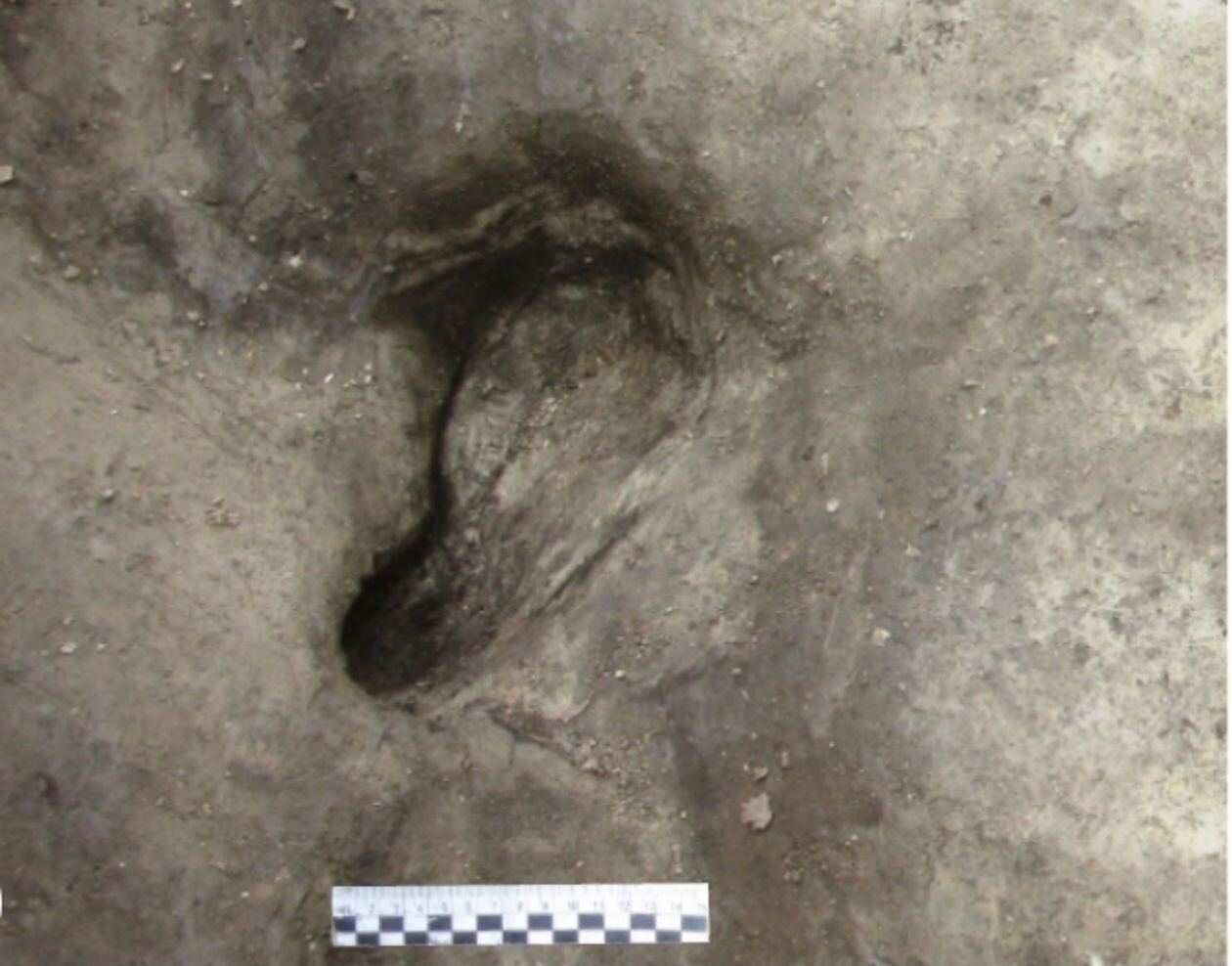An international research team led by scientists from the University of Tübingen and the Senckenberg Center for Human Evolution and Paleoenvironment has published a study in the journal Quaternary Science Reviews, presenting the earliest human footprints known from Germany. The tracks were discovered in the Schöningen Paleolithic site complex in Lower Saxony, which is approximately 300,000 years old. The footprints, believed to be from Homo heidelbergensis, are surrounded by several animal tracks, providing a snapshot of the ecosystem at that time.
The study describes an open birch and pine forest with an understory of grasses, surrounding a lake that is a few kilometers long and several hundred meters wide. On the muddy shores of the lake, herds of elephants, rhinoceroses, and even-toed ungulates gather to drink or bathe. In the midst of this scenery, a small family of “Heidelberg people,” a species of human long since extinct, stands.
Dr. Flavio Altamura, a fellow at the Senckenberg Center for Human Evolution and Palaeoenvironment at the University of Tübingen (SHEP) and the lead author of the study, explains, “For the first time, we conducted a detailed investigation of the fossil footprints from two sites in Schöningen. These tracks, together with information from sedimentological, archaeological, paleontological, and paleobotanical analyses, provide us with insights into the paleoenvironment and the mammals that once lived in this area. Among the prints are three tracks that match hominin footprints—with an age of about 300,000 years, they are the oldest human tracks known from Germany and were most likely left by Homo heidelbergensis.”
The scientists attribute two of the three human tracks at Schöningen to young individuals who used the lake and its resources in a small mixed-age group. “Depending on the season, plants, fruits, leaves, shoots, and mushrooms were available around the lake. Our findings confirm that the extinct human species dwelled on lake or river shores with shallow water. This is also known from other Lower and Middle Pleistocene sites with hominin footprints,” says Altamura.
2023-05-14 09:00:03
Source from phys.org
